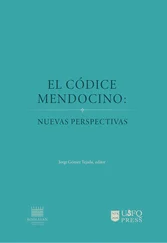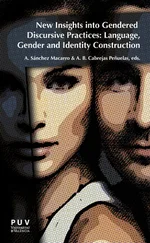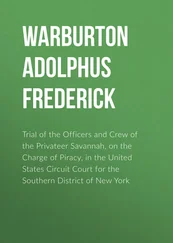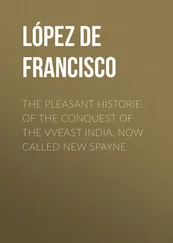More recently, Jorge Gómez Tejada (2012) made detailed observations on the material appearance of the colors of the Codex Mendoza, further stressing the explicit and intentional coexistence of indigenous pictorial modes and Europeanizing materials and techniques. In his opinion, the three parts of Codex Mendoza were drawn and painted as part of a single and coherent project by two identifiable artistic hands, whose work intermixes in the codex and even on the same page, suggesting that the two artists worked in the same workshop, as also suggested by the general coherence of the pool of painting materials across the three sections of the manuscript (Gómez Tejada 2012, 142–57; Chapter 5 of this volume). Although he agrees that some traits (such as the rendering of objects hit by lateral light) are European-derived, Gómez Tejada interestingly observed that the shading of color in order to render volumetric forms as well as the differential saturation of colors (shown in depictions of jade and water) do not necessarily indicate a European influence. He drew this conclusion because similar visual resources can be observed on pre-colonial artifacts such as Codex Borgia and in Maya mural paintings, even in examples dating back to the Preclassic period. In other words, according to Gómez Tejada, flat washes were not the only essential trait of pre-colonial scribal art.
Based on naked-eye examinations of the original manuscript at the Bodleian Libraries and personal communictions with Diana Magaloni Kerpel, Gómez Tejada proposed that the two painters used a constant and restricted palette composed by lamp black, a white paint he calls tízatl (often mixed with other colors), an organic yellow he identifies as zacatlaxcalli, cochineal red, a purple he identifies as camopalli, brown ochres, and Maya blue. He also observed that these colors were sometimes superimposed over one another and mixed. As for the alphabetic texts, he recognized the use of ferrogallic inks (sometimes also used to correct details of the images) and he supposed that the red color used to trace the alphabetic transcription of the year signs on page 1v is minium (that is, red lead). In sum, Gómez Tejada (2012, 136) stressed that the Codex Mendoza was painted as a single and coherent project by at least two artists who consciously mixed native and European materials, techniques, and modes of representations “as conscious and powerful rhetorical devices that are employed to meet the narrative priorities of the artists and authors of the work and not merely approached or emulated”.
Our own inspection of the manuscript confirmed some of the previous observations by Howe and Gómez Tejada, such as the quite homogeneous palette used on the whole codex, even with varying degrees of frequency of specific color use. All three parts, for example employ the superposition of grey over pink, even if this color is much more common in Part 3 than in Parts 1 and 2. Color intensity is often used to represent volume and tridimensionality (as in the green mountain toponyms), but also to provide a visual representation of iridescent colors (as on feathers, greenstones, and watery bodies), a key element in Nahua aesthetics (Russo 2011). As is first stressed by Gómez Tejada (2012, 108–9) in his observation about the depiction of feathers in Codex Borgia, this should not necessarily be seen as a colonial innovation. Nevertheless, it is also clear that not all colors were used this way in order to represent volume. For example, if most of the green mountain toponyms and cactuses of Part 1 show the use of differential color intensity, that same cannot be said for red (e.g. folio 8r) or grey (e.g. folio 16v) mountains in the same part. In any case, it is clear that red is sometimes used with a decreasing intensity in order to represent color shades, such as in the flames of burning temples (where it is superimposed on a yellow layer) or in the spondylus shells (e.g. folio 12r). Brown is also used in different tones to represent iridescence, such as in the feather of the eagles on folios 2r or 5v. In blue areas, the varying intensity is evident, but it is not always clear to which degree this was intentional (e.g. in the turquoise year bands). These variations in color use suggest that Howe could have been right in imagining different painters applying different colors; she was also probably correct in noting that the green color is the one that shows more innovative uses, such as the representation of objects lit by a lateral light.
The different colors seem to have had different degrees of liquidity: observing the reverse side of the painted pages, it is clear that the red color was the one that passed through the page more than any other. The other color that often passed through the page is yellow (one of the two yellows used in the manuscript, see below), as can be observed on the reverse of the yellow shields in Part 1. These different degrees of liquidity could have had some causal relationship with the differential painting order observed by Howe in the warriors’ costumes in Part 2, where inner black elements were traced after coloring only if the color was precisely red or yellow; perhaps, being more liquid, these colors would have smudged the underlying black areas.
The MOLAB campaign: methods, strategy, and limitations
Due to logistic limitations resulting from the need to perform analyses with various instruments on five different codices as well as to minimize the handling of the manuscripts, a few representative folios of Codex Mendoza were selected for study. The selection was guided by the goal to measure the different colors used in the manuscript in at least one folio per part in order to eventually detect changes in the palette within the different parts of the manuscript. The selected folios were 1v, 2r, 37r, 63r, and 64r. The strict selection of folios and the relatively low number of measured color areas means that our analyses cannot be expected to reveal any slight differences in color use or a precise mapping of the distribution of specific painting materials throughout the manuscript; achieving such objectives would require a much longer and more detailed analytical campaign. Nevertheless, the analyses allowed us to define the chemical characterization of the main colors of the palette used by the painters of the Codex Mendoza. When compared with the data recovered from other pre-colonial and colonial manuscripts studied in our project, these findings also allow us to evaluated the degree to which the Codex Mendoza’s painting technology was innovative as compared with traditional painting techniques of pre-colonial origin.
Such non-invasive analyses provide previously unthinkable data in the scientific study of rare and precious manuscripts that cannot be sampled for obvious reasons. However, it is also important to stress that such techniques also have some inherent limitations. For example, the employed techniques can reveal the chemical composition in a certain color area but not their absolute amount; moreover, when dealing with organic colorants, it is easier to characterize blue and red dyes than yellow and orange ones.
The following spectroscopic methods and imaging techniques were used in situ in a complementary fashion: X-ray fluorescence (XRF), reflection mid-FTIR, UV-Vis reflection and emission, micro-Raman, digital microscopy, and digital NIR imaging. Experimental details can be found in a previous publication (Domenici et al. 2017).
Results
White areas (paper)
The mid-FTIR spectra collected on the white ground show the signals related to the cellulose paper, as well as small and variable amounts of Ca, Fe, S, and K detected by XRF. The absence of any significant signal confirms what was readily detactable by naked-eye observation: most of the white areas of the images were simply left unpainted. Unfortunately, none of the rare areas where a white painted color was employed were measured. Nevertheless, the fact that calcium carbonate was detected as a component of a grey area (see below) strongly suggest that the white color of the Codex Mendoza painters’ palette was indeed calcium carbonate (called tizatl in colonial Nahuatl texts) (Dupey García 2016), as suggested by Gómez Tejada (2012).
Читать дальше












